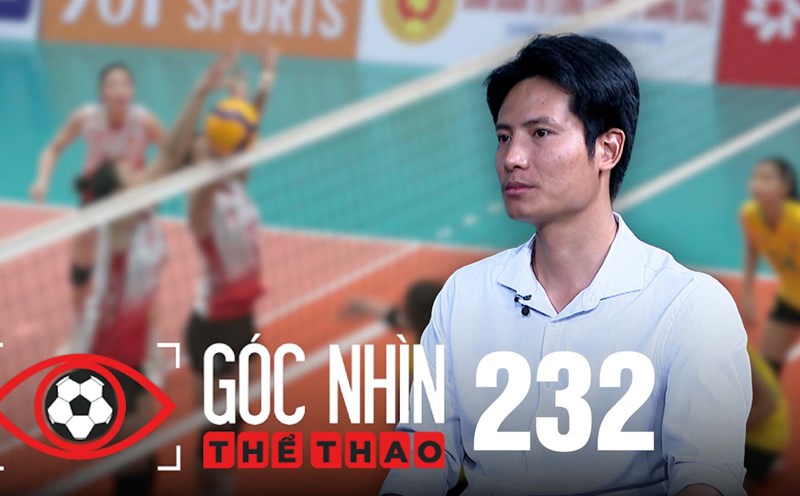From Taoist temple to Buddha's temple
Lam Duong Pagoda is also known as Da Sy Pagoda and is known by many people as "Lam Duong Pagoda", because the pagoda was previously an ancient Dao Pagoda on Thang Long land. During the Mac Dynasty, Lam Duong Quan belonged to Huyen Khe village, Trung Thanh Oai commune, Thanh Oai district, Ung Thien prefecture, Son Nam temple; today it belongs to Da Sy village, Kien Hung ward, Ha Dong district, Hanoi.
The name Da Sy is also of interest to many people and has many different explanations. The pagoda still preserves a bell named "Lam Duong Quan Chung", cast in the year of Canh Thinh Nguyen (1793), when King Quang Toan first ascended the throne.
The current bell is hung on the temple bell tower, there is also a minh on the bell. Currently, at Da Sy temple (located next to Lam Duong pagoda), Hoang Don Hoa - the ancestor of the knitting profession in the late 17th century and his wife.
Da Sy village is known for its tradition as a professional forging from the Tran dynasty, in the village there are many famous monuments. The landscape of Lam Duong pagoda is also described on the Lam Duong stele, "The scene of the street is gladiator, on the left right, a strip of land, in front of the back is a beautiful, full and sacred river".
Up to now, it is still not possible to determine exactly when Lam Duong Pagoda was built, however, based on the stele documents still preserved at the pagoda, from the early 17th century to the mid-20th century, the pagoda has undergone many major restorations in the years: 1628, 1680, 1724, 1740 and 1944
Regarding the transformation from the religion to become a Buddhist temple of Lam Duong pagoda, many researchers are concerned by many researchers. Try Assoc. PhD. The People's Committee Hoang Van Gia - former Deputy Chairman of the History Department of Hanoi University (now the University of Social Sciences and Humanities) made the statement about this change as follows: “Lam Duong Duong into Lam Duong Pagoda together with some shops taking place in the late 16th century lasting to the 18th century.
This was the Mac dynasty robbing the Le house. Trinh Pho Le Kien Mac, then Trinh - Nguyen Phan Tranh. Although the king exists unrealistic names. That situation, Confucianism lost his role in the Three Spears of the Grapes, Buddha and Dao. Mac, Trinh and Nguyen cannot take the teachings of Confucius to teach the people and rule the people. The Mac, the Trinh family could not say "the patriarchal army", or "troops, incident, side" ... ".
Traditional architecture
Lam Duong Pagoda was built in the Southeast direction - the traditional direction of ancient Vietnamese architecture with the symbol of gratitude, towards intelligence, happiness and goodness, this is also the direction of the gods and emperors.
The Tam Quan of Lam Duong Pagoda is built in the "two -storey roof" style, 10m high, there are four pillars, the top is covered with four phoenixes, leaves flip and left. The first floor of Tam Quan consists of 1 main door and 2 auxiliary gates, built in the form of arches. The top of the roof also recorded three large Chinese characters "Lam Duong Quan". Inside, next to the two auxiliary doors, the steps leading to the second floor, where the bell hanging "Lam Duong Quan Chung" was cast in the year of Quang Toan (1793).
Along the pagoda's solemn axis, through the brick yard leading to a stele house, inside is a large stele named "Lam Duong Quan Bi Ky/Kem Nho Bi Ky" built in the 15th year of Bao Dai. Behind the stele house is a stone incense tree named "Lam Duong Quan Thach Hoang".
On the trunk of the incense, it also recorded the basic information about Lam Duong Quan, the incense tree was built in the year of the Canh Hung Nguyen (1740) under King Le Hien Tong. Following the main axis, to the front yard of the Three Jewels is the place where 8 ancient steles of the temple, the earliest stele dating back to the 10th year of Vinh To (1628), under the time of King Le Than Tong.
The main architectural part of the pagoda includes Tam Bao and the ancestors, in front of the Tam Bao building consisting of 5 front roads, built in the style of the husband, the gable of the director, above the main hall, there are three great words "Lam Duong Quan". Connecting to the middle of the front building is the upper electricity to create the ground into the shape of "Dinh".
Connected to the two gains of the front road to the porch of the nest consisting of 6 corridors, where the rafters are created in the style of "gong price husband". Behind is the ancestral house area, surrounded by a number of other works forming a closed architectural complex for the temple.
Unique Lam Duong Pagoda worship statue
With the special and characteristic features of Lam Duong Pagoda, it still preserves many artifacts with great historical and cultural values. In addition to the stone stele system, stone incense trees and bronze bells, the pagoda also preserves a very special worship statue system that not every pagoda has.
As an ancient religion, Lam Duong Quan also saved the religious statue system. In the altar, placed in the highest position is the Tam Thanh statue: Ngoc Thanh statue sitting in the middle; Thuong Thanh statue sat on the left and the statue of Thai Thanh sat on the right. All three statues are sitting, from 0.98m - 1m high; width from 0.45m - 0.48m; Hands are posed to catch the decision, costumes and activities clearly show the teachings of Lao Tzu.
In addition to the three Tam Thanh statues, the pagoda currently has many other Taoist statues being worshiped such as: Bac Dau statue, Nam Tao statue, Hau Tho Hoang Dia Ky statue, Dong Nhac Dai De statue and Ngu Nhac Tinh Quan statue set, especially the Thai Thuong Lao Quan - Lao Tu statue.
The worship statues include both male and female gods, however, most of them are male gods, each statue has a different shape and appearance but when gathered together, the costumes and demeanor of the gods exude the characteristics of the Taoist worship statue.
When it was converted into a Buddha pagoda, Lam Duong pagoda added Buddha statues to the worship system. Located below the Tam Thanh statue is the Tam The Buddha statue with the philosophies and profound meanings of Buddhism representing the affirmation, reason, past, present and future.
In addition, the pagoda also has a number of other unique Buddha statues such as: A Di Da statue, Tuyet Son statue, Cuu Long statue, Quan The Am statue.In addition to the indispensable main statues of Buddhism, Lam Duong Pagoda also has other statues such as: De Thien, De Thich, Khuyen Thien, Trung Ac.








